Student-led ASUREI unveils largest project expenditure
ASU REI’s solar panels, just up the hill from the State Farm Lot.
April 5, 2023
Off of State Farm Lot, the place where freshmen typically park, to the right lies a small road which veers off to the left and houses a few little buildings including the data center, home to Appalachian State University Renewable Energy Initiative’s largest project expenditure to date.
Joey Crews, a senior sustainable technology major and president of the student-run club, immediately recalled the location of the new project, formally titled the State Farm Solar Array. He said the project has been ongoing since 2017.
The website, Energy Education says “a photovoltaic (PV) system is composed of one or more solar panels combined with an inverter and other electrical and mechanical hardware that use energy from the Sun to generate electricity.”
The State Farm photovoltaic arrays’ energy output, Crews said, is comparable to the Broyhill Wind Turbine completed in 2009. Currently, both projects produce similar high amounts of renewable energy.
Crews said the initiative does not end their sustainability efforts with the addition of new PV array systems, the goal is to decrease overall energy consumption.
“You can’t just have fields and fields of solar on every roof and expect and expect everything to survive,” Crews said. “You have to be introspective and look at how much energy you’re using.”
Since the initiative began their focus on energy efficiency projects and additions to campus, Crews said “we’ve gone from around 2% of the university energy being supplied by renewable energy to around 21%.”
“It is not all about renewable energy; it is about conservation, energy efficiency, student engagement, making sure students are informed,” Crews said.
Jackson Lamb, vice president of the club and a senior cell and molecular biology major, said the total cost of the project at its completion totaled approximately half a million dollars, making the project the most expensive sustainability effort in App State history.
“COVID slowed down the process a lot,” Lamb said. “Whenever you are doing stuff on campus, there is a lot of red tape, a ton of red tape.”
He said projects surpassing over $300,000 are mandated to go through a bidding process through the Town of Boone, which opens up the project to local solar and construction companies to work on the project.
“There are just a lot of things to work through, and that is why it was a four year process,” Lamb said.
The project received funding from a fee, included in every student’s tuition “which only amounts to a small fraction of every student’s tuition,” Lamb said. “Half a million plus was student money that we get that we saved up, and then we funded this project all on our own.”
The initiative may spend their budget as needed, as long as the initiative’s spending aligns with their mission statement and is university approved, Lamb said.
According to the Renewable Energy Initiative website, their mission statement is to “reduce the environmental impact of Appalachian State University by implementing renewable energy technologies, investing in energy efficiency projects, and promoting campus engagement.”
Each of the club’s projects aims to reduce the university’s total unrenewable energy usage with every new energy efficiency project implemented, Lamb said.
In order to declare a PV project sustainable, steps to increase the affiliated buildings’ energy efficiency, like adding pipe insulation or LED upgrades and window tinting is necessary, Lamb said.
“Only then solar is really beneficial to a building, because that kind of puts it over the edge and makes it kind of like a closed loop,” Lamb said. “A self-fulfilling building.”
Jonathan Pierson, App State’s energy manager and an adviser to the initiative, describes his work as a precursor to the initiative’s sustainability projects, like PV Solar Arrays’.
“My main focus is trying to make the campus more efficient, focused on ways to cut costs and emissions of existing buildings,” Pierson said.
Hannah Armstrong, the club’s marketing manager and a junior cell and molecular biology major, said the club’s overarching mission, in addition to increasing renewable energy usage, is to help reduce the carbon footprint of the university.
She said the array will greatly reduce the universities’ net energy usage and move the university a “big step” toward carbon neutrality.
Ultimately the goal is to utilize less energy as a whole renewable or nonrenewable Armstrong said.
Jim Dees, App State’s data and assessment specialist with the Office of Sustainability focuses on transferring sustainability data to sustainability enterprises. Dees currently serves as a staff adviser for ASU REI and has for about 10 years, he describes his involvement as more like a facilitator.
“I am not too much on the technical side,” Dees said. “I help students actually implement the project ideas they come up with.”
Dees said concept to implementation of students’ is his primary focus, which he said involves listening to students, then using his expertise to contact respective offices such as design and construction, often in tandem with club officials.
He said he contacts the offices often through email and asks questions like “hey, we would like to do X,” and frequently the response will be along the lines of “we are going to reroof that building in about four years, so it doesn’t make sense to put a PV system on top of a roof that you are going to have to move out of the way,” Dees said.
Dees noted that oftentimes students’ ideas such as covering every roof with a PV, are often “good in theory,” yet “the practicality of that isn’t quite as easy as it sounds.”
His responsibility, Dees said, is to help students navigate the idea implementation process through educating members of the club on who to inquire with their questions about specific components of the project implementation process and through which communication mechanism.
“So well, we have kind of that institutional knowledge of, you have to check with the dean of students to do that,” Dees said. “And here’s how you should ask them, we kind of help with the subtleties of that.”
While REI is a part of Dees job title, the position itself is exclusively a volunteer adviser position. Dees said he works as a liaison rather than a spokesperson between faculty and the students.
“The cool thing is, I cannot speak for REI, I cannot advocate for them and lobby for them,” Dees said. “But I will gladly go ask them and I will go present it to them, and say ‘hey, this is an opportunity that ran into me…any interest in supporting, X, Y or Z project?’”
Lamb said the club embraces new student involvement. Anyone, despite their major, interested in participating in the club, is welcome to come to a general meeting. More information is on the club website.

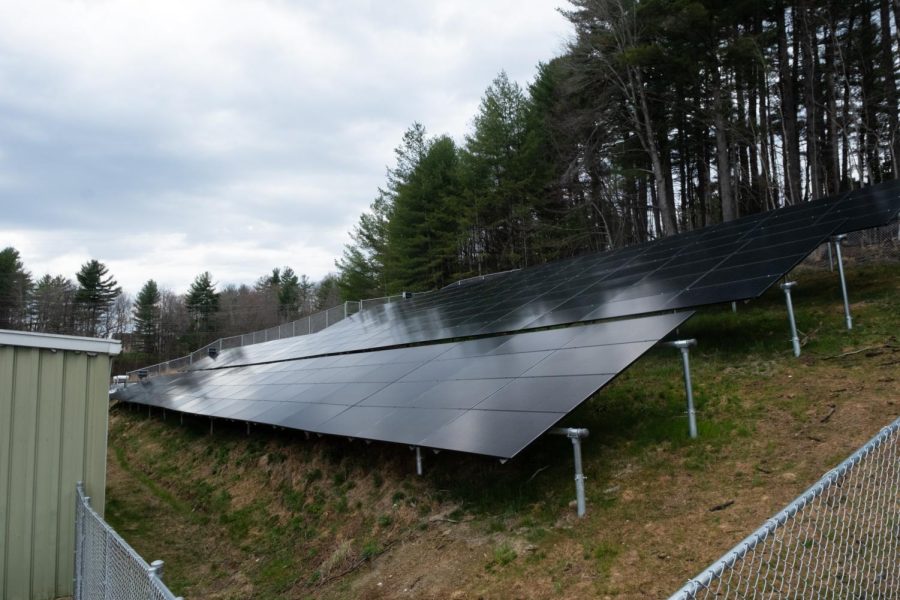
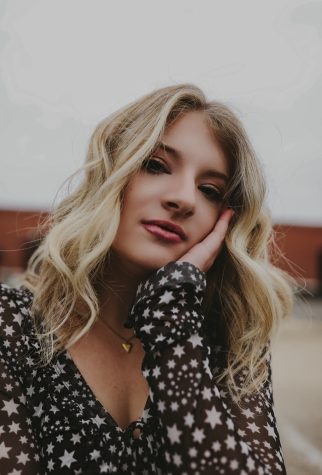
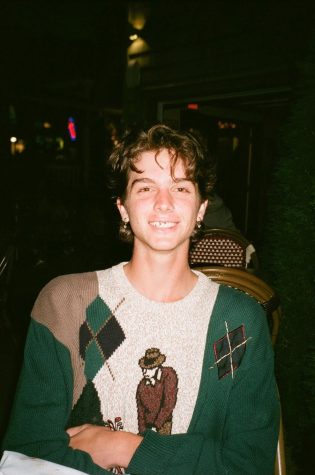


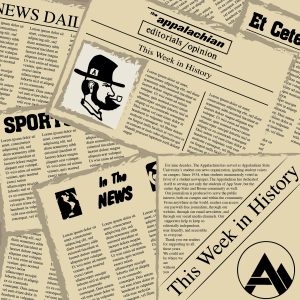
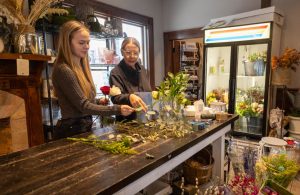
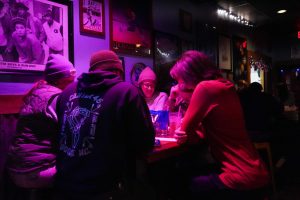





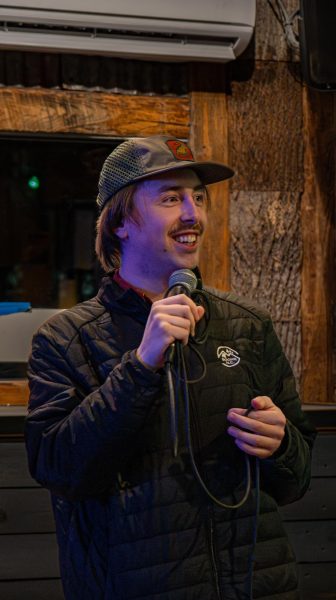
MuChao • Apr 6, 2023 at 12:52 pm
REI – one of the best examples of (actual) sustainability efforts on campus.
Just remember: REI’s projects are *student-funded* using a student fee that was (voluntarily) enacted years ago by student vote. One of the only student fees that has that distinction. The majority of the sustainability efforts on campus are not the university, it is students who are paying for and implementing these projects. No matter how much the University might try to take credit for the work of REI at the end of the day and claim their work as sustainability efforts for the university as a whole, it is the student members of REI and their faculty/staff advisors who deserve all of the applause; it’s their hard work that helped make this a reality.
The university leadership likes to portray AppState as “sustainable” and “committed to sustainability” but their financial decisions paint a very different picture. The entire university could immediately begin purchasing 100% renewable electrons (i.e. offsetting 100% of electricity by purchasing from renewable resources) for ~4-5% of the annual athletic dept LOSSES. Athletics LOSES over $20 million. Every. Single. Year. And these losses are subsidized largely by the >$1000/student/year fees that students are forced to pay and which were not voted on nor approved by students, unlike REI (go look at your receipt!) By comparison, the fee for REI is ~1% of the Athletics fee ($9/student/year)
It’s not much more expensive to also begin offsetting all heating with renewables, a fraction of the costs associated with annual Athletic losses. Electric + heat together would be just under 20% of the annual financial losses incurred by Athletics according to financial data on the costs for renewable heat/electricity offsets presented in the AppCAP document. These two steps alone would immediately lead to offsetting ~70% of campus’ carbon footprint.
Offsetting is by no means a perfect solution, of course, but it’s the easiest, most immediate change that can be made, showing the university is actually committed to rapid decarbonization, and not just green-washing and throwing around buzzwords like “sustainability.” By comparison to other costs (ex: Athletics) it’s not even that expensive to accomplish, either! At the very least, offsets are a place holder until more substantive changes can be fully implemented (efficiency improvements, energy reductions, increased new renewables deployment, etc.)
The fact that the university claims to be “sustainable” and uses that to lure students in through their advertising, yet continually chooses to fund the financial black-hole that is Athletics at a rate vastly exceeding that of sustainability is a perfect example of this disconnect. The fact that the university seems completely unwilling to pay the comparable pennies for renewable offsets (it bears repeating: ~4% of annual athletic *losses* = 100% renewable electricity offsets) only highlights the level of green-washing so insidiously prevalent in their advertising and day-today decision making.
AppState students, faculty, and staff might be committed to sustainability, but the university leadership? Only as a means to enroll more students, an action that in and of itself is inherently unsustainable given the geography of our small community.
Well done REI for actually walking the walk!! Y’all rock!